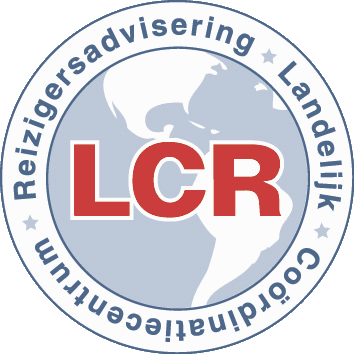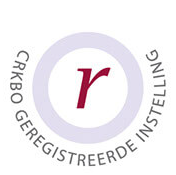Maran Fazzi has been involved with Outdoor Medicine for several years and she has been assisting with the Advanced Wilderness Life Support (AWLS) course. She was looking for an expedition to apply her wilderness knowledge. So decided to quit her job as a resident not-in-training and came across a message on Facebook saying the “Phoenicians before Columbus Expedition” was looking for a medical doctor. It turned out to be an expedition from Tunisia to the Americas on a 20-meter-long replica of a 600 b.C. wooden Phoenician sailing vessel. The goal of the expedition was to prove that the Phoenicians could have crossed the Atlantic Ocean, 2000 years before Columbus did.

Doubts
The Atlantic crossing seemed quite terrifying and I doubted my qualities as a doctor because of my short amount (2.5 years) of work experience. I contacted the captain and he said that there was space for me on board from Cádiz (Spain) via Essaouira (Morocco) to Tenerife (Canary Islands). He suggested I should consider how comfortable I would be on a “potentially leaky wooden boat hundreds of miles away from land”. He explained that it was going to be tough, mentally as well as physically and that it wasn’t for everyone.
Go!
Somehow this did not make me doubt and I confirmed my participation. Because of the unpredictable nature of the expedition, the timing didn’t go as planned and I joined a bit sooner, in Gibraltar. Because of the irregular contact with the captain, since, naturally, he was mainly at sea, I didn’t succeed in getting a clear view of the population and medical supplies on board beforehand. So I had to guess to assemble my own medical kit.
Chaotic
When I stepped on board the Phoenicia on the 14th of October 2019, I was slightly shocked. The cabin on deck was a chaos to say the least. It turned out to be the place where people cook as well as eat and work. Everything was scattered everywhere and it didn’t look particularly hygienic. It would only be a matter of time before there would be an outbreak of gastro-enteritis, I thought. Belowdecks everyone slept close together in hammocks, the toilet was next to the deck, outside of the railing and consisted of a hole with a toilet seat on top. The toilet was also the place for taking showers, using a bucket of sea water.
The rhythm on board
I got used to everything very quickly and I got along well with the other crew members. The crew was diverse in age and origin and changed each leg of the journey. All decades were represented from teens to people in their seventies, just as all continents but Antarctica were represented. Being a doctor on board was not a day job, so I was a regular crew member and did all the same work as everyone else. This consisted of four- or six-hour shifts (watches), in which we each spent an hour helming, looking out, checking, cooking and cleaning and we were considered to provide some entertainment from time to time. This went on 24 hours a day. Being two teams, this meant doing the 2 a.m. to 8 a.m. watch every other night, with only four hours of rest afterwards. You can imagine, and other medics will probably confirm, that this can be both mentally and physically straining.

Sweet and salty
It wasn’t particularly pleasurable being woken at 1.45 a.m. (or any other time of the day) after too little sleep, using my limited free time to try, in vain, to catch up on sleep, to eat pasta with tomato sauce twice a day, to sit on the toilet while everybody sees your pooping face and white buttocks, to take showers and to do laundry with sea water and to work in the heat without refrigeration, ventilation or air-conditioning. In spite of that, I incredibly enjoyed life on board: the mighty feeling of freedom and being alive when steering this 50-ton historic ship through the waves, witnessing the spectacular daily sunrise and sunset, sailing under the milky way and countless stars at night and calling a wonderful group of people from all over the world your sea-family. Apart from that, it was refreshing to be closed off from the outside world; a digital detox or seahab.
The calling of the crossing
All of the above made that it started to itch to also cross the Atlantic. I had obtained a lot of confidence in the ship and the crew. And I wanted to find out for myself if I would be up for the mental challenge of being at sea for four to six weeks. Moreover, there would not be any other doctor on board and I thought that it would be better to have a young doctor than no doctor at all and even an experienced doctor would have the same limited diagnostic- and therapeutic measures as me. Apparently I had proven myself, because the captain agreed and was happy to have me on board for the crossing.
Fear
On the 23rd of November 2019 we left Tenerife in the direction of the setting sun. In the beginning I was looking up to the length of the voyage, but the decision to live from day to day made this a lot easier to deal with. In the first week I also struggled with fear. What if the ship got severely damaged? That would lead to evacuation in the life rafts and floating around in the middle of the ocean until we would be found eventually, either alive or dead! I also felt the responsibility of being the doctor and the fear of a medical situation occurring that would require evacuation, something that is not possible in the middle of the ocean.
Enjoying
Slowly but surely I regained confidence in the ship. I also realized that there is no point in fearing something that you have no control over, it will only spoil the adventure. And what an adventure it was! I couldn’t get enough of seeing whales, dolphins and turtles, eating freshly caught fish and feeling the ship being lifted by four to five-meter swell with an endless horizon. The life on board also got a lot easier because we were three teams now instead of two, giving me a lot more free time. I used this time to start meditating again, to read, listen to music, to write in my diary and to play games with the others.
The new world
On the 31st of December 2019, after 39 days at sea, we arrived in the Dominican Republic. For me personally it was an incredible journey. And for me as a doctor? Fortunately no major things occurred, but I did have some things to do. This mainly concerned (infected) burns, wounds, cuts and splinters (because wooden boat), conjunctivitis, the “Phoenicia cough”, musculoskeletal overuse, mild gastro-enteritis and a few psychological issues. But the biggest problem was seasickness.

Mal de mer
I got a taste of that as well. Every first 24 hours of each new leg I was seasick. Medication relieved the symptoms somewhat, but the seasickness made me incredibly tired and nauseous. All I wanted to do was to sleep on the deck in foetal position. Just thinking of food and drinks was almost enough to make me throw up. I forced myself to keep looking at the horizon and to occasionally take sips of water with some dry toast. My body adjusted after 24 hours and I felt energetic again and was able to enjoy once more. I never experienced motion sickness before, but the Phoenicia doesn’t have a keel and the pounding waves, especially in the Mediterranean, made her rock in all directions. This proved enough to make more crewmembers experience seasickness for the first time.
On internet I read a message of someone asking for advice about seasickness, the response he got was: “don’t worry, the hope of dying will keep you alive”. It didn’t get that bad for me, but for some people it does. On board occurred a case that caused me a lot of worry. Fortunately this was on a shorter leg of the journey, not on the Atlantic crossing. This crew member barely ate or drank anything and got stuck in the downward spiral of nausea and weakness and couldn’t keep down any medication. Rectal pills failed to work as well. Besides that, there was a language barrier and there were cultural differences as well, making the whole situation even more difficult. The person confessed not having peed for days. I wondered if this purely was a lack of intake or embarrassment to use our lack-of-privacy toilet. It probably was a combination of both. The person did not allow me to examine the abdomen. I was concerned for urinary retention, urinary tract infection and/or kidney damage. There was no possibility for administering intravenous fluids. The person stayed alert and coherent during the length of the voyage. Fortunately the seasickness disappeared as soon as we arrived on land on day five. At the time I was quite worried and felt powerless, but luckily this story had a happy ending.
Almost at the end
After the Dominican Republic we continued sailing until Florida in the United States, where we received a big welcome. When the COVID-19 pandemic started to have more and more serious consequences, I flew back to the Netherlands mid-March.
There is so much more to tell about this journey, but I will not do that here and now. See the website www.phoeniciansbeforecolumbus.com, Facebook and Instagram Phoenicians before Columbus Expedition for an impression of life on board and more photos.





